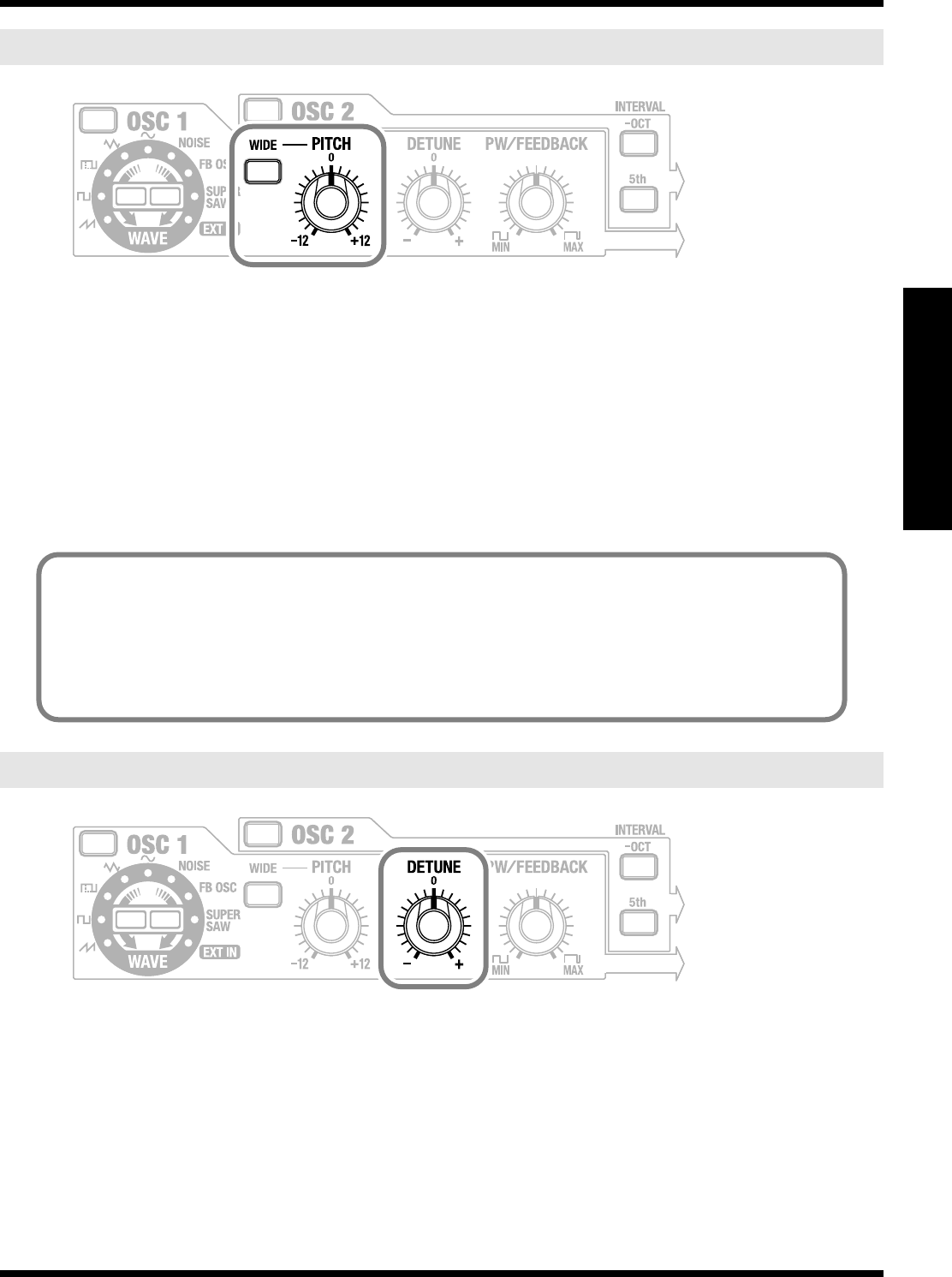
29
Creating sounds
Creating sounds
fig.PITCH-knob
This knob specifies the pitch.
• Turning the knob toward the right raises the pitch in semitone steps.
Turning the knob all the way raises the pitch one octave above the center setting.
• Turning the knob toward the left lowers the pitch in semitone steps.
Turning the knob all the way lowers the pitch one octave below the center setting.
WIDE button
This button expands the range of the PITCH knob by a multiple of three.
If you press the WIDE button so it’s lit, the PITCH knob will have a range of +/-3 octaves.
If you press the WIDE button once again so the light is off, the PITCH knob will return to a range of +/-1 octave.
fig.DETUNE-knob
This knob provides a finer pitch adjustment than the PITCH knob.
You can use it to create a slight difference in the pitches of OSC 1 and OSC 2 so that the sound is slightly
modulated, producing a richer tone (Detune effect).
• Turning the knob toward the right raises the pitch.
Turning the knob all the way raises the pitch 50 cents above the center setting.
• Turning the knob toward the left lowers the pitch.
Turning the knob all the way lowers the pitch 50 cents below the center setting.
What is a “cent”?
One cent is 1/100th of a semitone. Fifty cents is half a semitone.
PITCH knob
DETUNE knob
Using the PITCH knob
For example, by setting the OSC 2 pitch five semitones (a perfect fourth) below OSC 1, you can play a single key
to produce a heavy sound similar to when two adjacent strings are played at the same fret on strings 3–6 of a guitar.
You can also use the PITCH setting to shift the sound to the range in which you’ll usually be playing it. For
example, if you’re creating a sound that’s normally played in a low range, such as synth bass, you can set
PITCH one octave down.
SH-201_r_e.book 29 ページ 2006年4月27日 木曜日 午前11時28分


















